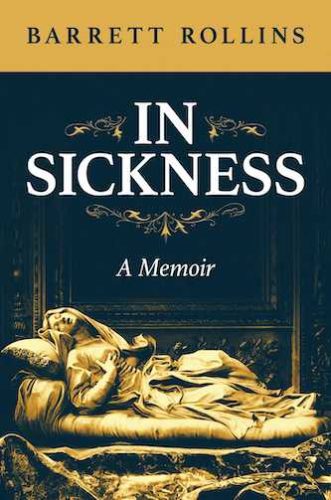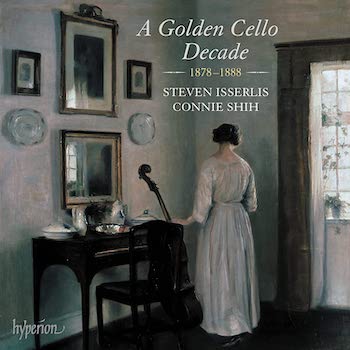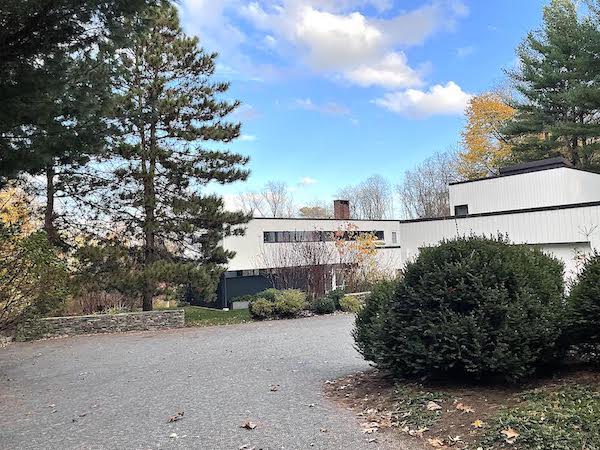December Short Fuses — Materia Critica
Each month, our arts critics — music, book, theater, dance, television, film, and visual arts — fire off a few brief reviews.
Jazz
Jazz improvisation is front and center on Front Street Duets, which spotlights two superb Cuban pianists, Hilario Durán and David Virelles.
 In August of 2018, I had the pleasure of hearing two Cuban pianists, Gonzalo Rubalcaba (born in 1963) and Chucho Valdes (born in 1941), playing duets at the SF Jazz center. (Arts Fuse review of their concert at Jordan Hall.) The pairing brought together, memorably, two generations of Cuban music. The recent ALMA recording featuring Hilario Durán (born in 1953) and David Virelles (born in 1983) spotlights two other Cuban pianists from different generations. It provides a similar deep-diving pleasure. Entitled Front Street Duets, the recording took place, appropriately enough, in Glenn Gould’s studio on Front Street in Toronto.
In August of 2018, I had the pleasure of hearing two Cuban pianists, Gonzalo Rubalcaba (born in 1963) and Chucho Valdes (born in 1941), playing duets at the SF Jazz center. (Arts Fuse review of their concert at Jordan Hall.) The pairing brought together, memorably, two generations of Cuban music. The recent ALMA recording featuring Hilario Durán (born in 1953) and David Virelles (born in 1983) spotlights two other Cuban pianists from different generations. It provides a similar deep-diving pleasure. Entitled Front Street Duets, the recording took place, appropriately enough, in Glenn Gould’s studio on Front Street in Toronto.
Hilario Durán has been a force in Cuban music for 45 years, while David Virelles is a relative newcomer with just 20 years on the scene. Over the years Durán has made striking arrangements of a number of traditional Cuban music forms: guajira, punto cubano, danza, malanga and tumbao. Working together, the two pianists have come up with some very stimulating improvisations that range across expansive musical territory.
Their rapport starts with “Guajira for Two Pianos,” which is a perfect vehicle for their combined virtuosity, an affinity that is followed by the aptly named “Challenge,” where the two pianos engage in a duel, firing off complex volleys. The slower tempo of “Punto Cubano” allows the musicians to relax.
Virelles mentions in an interview about this record that “Danza Lucumi” is a very old song that may never have been recorded before. Their treatment of the piece manages to be both intriguing and quite beautiful. “La Malanga” proves that Durán and Virelles can command a danceable beat. Durán follows the latter tune with a strong political statement. “Milonga por Cuba” is a song dedicated to the Cubans who protested the state of the economy and direction of the government on July 11 of 2021.
The last three tracks are significant achievements. “Santos Suarez Memories,” “David’s Tumbao,” and “Body and Soul” could not be more different. Santos Suarez is a district in Havana and it must be a damned interesting place, given that it inspired this lively musical treatment. Durán’s nickname is Con Tumbao, and he has fashioned a tune that gives Virelles an opportunity to come up with a playful interpretation. Jazz improvisation is front and center on Front Street Duets, nowhere more so than on the final tune. Durán and Virelles take the old classic “Body and Soul” — popularized by Coleman Hawkins in 1939 — and give it an outstandingly up-tempo workout.
— Brooks Geiken
Rock
The set is the kind of kitchen sink release fanatics go wild for, though even the most committed Queen fan might find the box a little lacking were it not for “The Miracle Sessions” disc.
Like all Queen box sets, The Miracle Collector’s Edition is for diehards only. Who else would have a need for a whole disc of promotional interviews, another collecting B-sides, and a third that is merely an instrumental version of the original 1989 album? This is to say nothing of the Blu-ray/DVD dedicated to the videos filmed for the album’s singles, the 76-page book, the envelope stuffed with pictures and posters, the 180 gram heavyweight vinyl version of the record that includes the song “Too Much Love Will Kill You” (recorded for The Miracle but ultimately left off and not released until 1995’s Made in Heaven), or the CD-version of The Miracle, which everyone who buys this box will of course already own.
The set is the kind of kitchen sink release fanatics go wild for, though even the most committed Queen fan might find the box a little lacking were it not for “The Miracle Sessions” disc. The CD includes alternate versions of all of The Miracle’s 10-songs, plus six never released tracks from the vault. There’s studio banter, discarded lyrics, and all the signs of a band very much collaborating in the studio and making it up as they go. It’s exactly the sort of thing Queen doesn’t usually let out into the world, which makes “The Miracle Sessions” unique.
Of the disc’s previously unreleased songs, the stark “Face It Alone” is the standout. At the time of its recording, front man Freddie Mercury knew he was HIV-positive. He knew his prognosis wasn’t good, and it’s hard not to hear that knowledge in a line like, “When the moon has lost its glow/You have to face it all alone.” It’s a haunting, beautiful vocal performance, and you certainly don’t need to be a diehard to be destroyed by it.
— Adam Ellsworth
Books
Jeff Chon’s at times confusing yarns serve up a fairly dystopian, often toxic mix.
 This short fiction collection (Sagging Meniscus Press) — set largely in a working class, suburban California and frequently told by Korean voices — is filled with outsiders. Jeff Chon’s This Is the Afterlife is about searching, about belonging… and not belonging. These stories, with success, chronicle discrimination and racism, honing in on the hypocrisy of American life, particularly the awkwardness pervading today’s ethnically mixed society. Somewhat in the spirit of Anthony Veasna So’s recent Afterparties, these tales show the difficulties in adapting to it all, especially happily. Here are some examples of the wild and woolly goings-on inside:
This short fiction collection (Sagging Meniscus Press) — set largely in a working class, suburban California and frequently told by Korean voices — is filled with outsiders. Jeff Chon’s This Is the Afterlife is about searching, about belonging… and not belonging. These stories, with success, chronicle discrimination and racism, honing in on the hypocrisy of American life, particularly the awkwardness pervading today’s ethnically mixed society. Somewhat in the spirit of Anthony Veasna So’s recent Afterparties, these tales show the difficulties in adapting to it all, especially happily. Here are some examples of the wild and woolly goings-on inside:
– A shunned Japanese high school student embraces heavy metal music and attempts to hang himself; this results in a record-burning demonstration by evangelicals in his town’s park. His alienated classmates observe it in disgust.
– An estranged son crawls through the wreckage of a house in which his mother, a hoarder, has died. Raccoons, as depicted on the book’s dust jacket, are involved …
– A traumatized veteran with a doomsday bunker in his backyard has a standoff with police.
– Two older single women bond after both are scammed online — by the same man.
– A contest held to draw graphic novels turns into chaos when it becomes politicized by anti-Muslim sentiment.
There are gun accidents, suicides, necrophilia, dead animals; also Anime, comics, video games. Everyone smokes, and some get high on cannabis-infused banana bread — it’s a fairly dystopian, often toxic mix found here. Yet somehow life is like high school as well, whether set in one, or revisiting those days. Several tales involve class reunions, with Asian narrators recalling and then confronting the prejudice of their youth. Others depict the friction in families of mixed — primarily Korean and American — relations; an especially strong one, “They Belong Here Now,” features adopted children, their decision to return to Korea to live, and the frustration of the California parents that raised them.
It can be hard to tell if the confusion that afflicts the characters is being intentionally reflected in the cloudy structure of some of these pieces — they can be hard to follow. And certainly what we’re being exposed to is less than agreeable more often than not. Nonetheless, Chon’s showing us a lot, and it may turn out to fascinate you.
— Drew Hart writes from Santa Barbara, California
In Sickness is both a medical case study and a psychological thriller: we want to know both how and why a wife managed to keep such an obvious physical symptom from her husband for 10 years.

I’ve long been fascinated by the consequence of secrets, often the catalyst of memoir. Medical secrets comprise a special category. Both as a cancer patient and friend to cancer patients, I’ve noted that people in this unlucky cohort fall into two groups: one hides their condition; the other does not. Celebrities like actor Chadwick Boseman and author Nora Ephron fall into the first group, as well as New York theater producer Joseph Papp, who obscured public knowledge of his cancer by commuting to Boston’s Dana Farber for treatment. Never, however, had I read about anyone who went to such extremes as the Boston oncologist who kept her metastatic breast cancer a secret from her oncologist husband for 10 years. After I read the front-page story in the Boston Globe, I wanted to review In Sickness: A Memoir by Barrett Rollins (Post Hill Press).
In the husband’s self-assured telling, Midwesterners Jane Weeks and Barrett Rollins met in 1983 at Beth Israel hospital. He was a senior resident and Amherst grad; she was a medical student and Harvard grad. They were both 31. By 2012, Jane was 60 and they had been married for 30 years, working as physicians and researchers at Dana Farber, lunching together on Fridays. One such Friday, she collapses and is taken to the ER. There, through her partly opened johnny, he is shocked to see a huge black tumor.
Rollins and his wife, as described by the author, might have interested Alfred Hitchcock. She is a cool, confident, “willowy” blonde. He is a complicated man, besotted by her from the get-go. Rollins paints his wife as a kind of goddess, universally beloved by friends, students, and colleagues, estranged from her family, and determined to assert and maintain control of her life. In Sickness is both a medical case study and a psychological thriller: we want to know both how and why she managed to keep such an obvious physical symptom from him for 10 years. We also want to know why a renowned researcher in the field of breast cancer would let her own illness develop without treatment. The memoir also lifts a curtain on a part of Boston’s medical stage that we in Boston are lucky to be able to consult. I will never look at my docs in the same idealized way again nor at their internationally renowned research centers.
Most strikingly, however, In Sickness is about a marriage. Rollins strives to be a fair and factually and emotionally accurate memoirist, but his anger often makes him an unreliable narrator. He’s still very much inside these scenes from a marriage — and he is no Ingmar Bergman. Still, I recommend In Sickness, with the trigger warning that its many graphic details are not for the faint of heart.
— Arts journalist and author Helen Epstein is the author of 10 books, including the recent memoir Getting Through It: My Year of Cancer during Covid.
Classical Music
 Ironically, one of the great triumphs of the career of Sergei Rachmaninov, best known for his emotionally charged orchestral writing and virtuoso piano music, was his Vespers & Complete All-Night Vigil (Op. 37). The vocal work’s premiere in March 1915 was a benefit for the war-relief effort. The evening was so successful that in that same month it received six performances. Although generally known as the “Vespers” in English, Rachmaninov’s great contribution to the history of Russian sacred music is, in fact, a setting of the services of Vespers, Matins, and the First Hour as they are celebrated in the Russian Orthodox Church. The presentation is also known as Vsenoshchnoe Bdenie, the “All-Night Vigil.”
Ironically, one of the great triumphs of the career of Sergei Rachmaninov, best known for his emotionally charged orchestral writing and virtuoso piano music, was his Vespers & Complete All-Night Vigil (Op. 37). The vocal work’s premiere in March 1915 was a benefit for the war-relief effort. The evening was so successful that in that same month it received six performances. Although generally known as the “Vespers” in English, Rachmaninov’s great contribution to the history of Russian sacred music is, in fact, a setting of the services of Vespers, Matins, and the First Hour as they are celebrated in the Russian Orthodox Church. The presentation is also known as Vsenoshchnoe Bdenie, the “All-Night Vigil.”
I first heard this mesmerizing work three years ago, sung by Skylark (the vocal Ensemble led by Matthew Guard). I was thunderstruck by its profound and seductive Russian beauty. That staging featured three world-class (very low) basses (octavists). The result was a strikingly different sound world than what we expect from this composer. It quickly became one of my all-time favorite pieces, so I was thrilled to hear the superb (harmonia mundi) album featuring the Estonian Philharmonic Chamber Choir under its principal conductor and artistic director, Paul Hillier. This hour-long work calls for a four-voice a cappella troupe: the Estonian Philharmonic Chamber Choir supplies a spectacular four-part chorus. Ten of the 15 sections are based on chant. In the other five sections, Rachmaninov was free to write music of his own, but the movements he wrote were so strongly colored by chant that he famously called them “conscious counterfeits.”
Cellist Steven Isserlis has a knack for coming up with clever CD concepts, and his latest, A Golden Cello Decade: 1878-1888, is no exception.
 Aficionados of British cellist Steven Isserlis’s recordings expect that half of their pleasure from his albums are supplied by his always engrossing and literate notes. He is the author of two children’s books, a recent study of Bach’s cello suites, and a volume that comments on the advice of his idol Robert Schumann. Add to that — for the moment — a flourishing following on Twitter that follows the musician’s hilarious description of his travels (or almost-missed destinations). The highlight among his tweets focus on his battle to board a plane with his cello — despite the incompetence of his perpetual nemesis, British Airways. Through all this he is as entertaining as he is unfailingly kindhearted.
Aficionados of British cellist Steven Isserlis’s recordings expect that half of their pleasure from his albums are supplied by his always engrossing and literate notes. He is the author of two children’s books, a recent study of Bach’s cello suites, and a volume that comments on the advice of his idol Robert Schumann. Add to that — for the moment — a flourishing following on Twitter that follows the musician’s hilarious description of his travels (or almost-missed destinations). The highlight among his tweets focus on his battle to board a plane with his cello — despite the incompetence of his perpetual nemesis, British Airways. Through all this he is as entertaining as he is unfailingly kindhearted.
Isserlis has a knack for coming up with clever CD concepts, and his latest, A Golden Cello Decade: 1878-1888, is no exception. Why, one wonders, was there such a deluge of gems for cello at this time? Isserlis suggests that it was “perhaps in part because cellists became interested in performing works of other composers, rather than just their own.” Cello concertos, he explains, “had to wait until the heyday of Rostropovich, from 1959-1970, for their torrential moment.”
Isserlis’s repertoire includes the first incarnation of Richard Strauss’s famous Cello Sonata in F, composed when he was only 15 (this version of the sonata was only published a couple of years ago — before that it was inaccessible); a glorious cello sonata from pianist-composer Luise Adolpha Le Beau; Isserlis’s arrangement (it was originally scored for violin and piano) of Dvořák’s gorgeous Four Romantic Pieces; a moving version of Bruch’s Kol Nidrei, Adagio on Hebrew Melodies by the ironically named Ernst David Wagner; and Isserlis’s deft arrangement of Isaac Nathan’s take on Lord Byron’s Hebrew Melodies (“Oh! weep for those”).
The extraordinary pianist is Connie Shih. Isserlis says she is his favorite from among his many distinguished (he calls them “long-suffering”) keyboard partners. There is also a lovely cameo by harpist Olivia Jageurs during Bruch’s Kol Nidrei (where the harp appears in the orchestral version). This gorgeous chestnut opens the album with a dramatic flair that never turns maudlin.
— Susan Miron
An album of J.S. Bach arias and cantatas that is filled with singing of power, agility, and style.

Heavenly Bach, soprano Amanda Forsythe’s second solo album with Jeanette Sorrell and Apollo’s Fire, picks up where the first one, 2015’s The Power of Love, left off. Which is to say, with singing of power, agility, and style.
For this Avie release, we’ve got a pair of cantatas – Jauchzet Gott in allen Landen! (BWV 51) and Weichet nur, betrübte Schatten (BWV 202) – plus two arias from the St. John Passion. It adds up to a concise, if slightly too-short, fifty-or so minutes of music. But what a near hour it is.
In Jauchzet Gott, Forsythe’s arias glow. The first, with its florid melismas, unfolds with astonishingly even tone while the soprano’s phrasings in “Höchster, mache deine Güte” are consistently graceful.
She’s equally fine in BWV 202, the so-called “Wedding Cantata,” which sits a bit more comfortably in her resonant middle register. Especially by Bach’s standards, this score is no masterpiece. Yet Forsythe blends gorgeously with the ensemble in the opening “Weichet nur,” her voice seeming to emerge just out of the instruments. “Phöbus eilt” is vigorous and athletic, “Wenn die Frühlingslüfte” soars elegantly, “Sich üben im Lieben’s” vocal part moves liltingly, and dancing line in “Sehet in Zufriedenheit” trips nobly.
Sorrell and her ensemble acquit themselves smartly in all of this, playing with commendable spirit and careful balances. Alas, there are moments in the St. John excerpts (particularly “Zerfliesse, mein Herze”) in which the orchestra predominates by a hair. Even so, the contrast between instruments and voice are striking. And the closing “Ich folge dir, gleichfalls” is bright and dancing.
It’s enough – if this is what’s required – to sustain one another seven years until Forsythe, Sorrell, and Apollo’s Fire cut another record. Let’s hope, though, the next wait is a shorter one.
This assemblage of longing-infused, early-20th-century pieces supplies plenty of love, death, oblivion, nostalgia, and naivety.
 One would be hard-pressed to find a collection of longing-infused, early-20th-century pieces than what Barbara Hannigan and friends have compiled on Sehnsucht, their new collection of chamber-sized arrangements of music by Alban Berg and Gustav Mahler. The album’s title translates to, well, “longing” (or “yearning”) and, between the former’s 7 Frühe Lieder and 4 Gesänge, and the latter’s Symphony No. 4, we’ve got love, death, oblivion, nostalgia, naivety – and in spades.
One would be hard-pressed to find a collection of longing-infused, early-20th-century pieces than what Barbara Hannigan and friends have compiled on Sehnsucht, their new collection of chamber-sized arrangements of music by Alban Berg and Gustav Mahler. The album’s title translates to, well, “longing” (or “yearning”) and, between the former’s 7 Frühe Lieder and 4 Gesänge, and the latter’s Symphony No. 4, we’ve got love, death, oblivion, nostalgia, naivety – and in spades.
Perhaps the most interesting feature of this disc (on Alpha) are the settings themselves. The 7 Frühe Lieder are heard in an adaptation by Reinbert de Leeuw and the 4 Gesänge in one by Henk de Vlieger. Meanwhile, Erwin Stein’s 1921 transcription of the Mahler gets a rare outing on disc.
Perhaps surprisingly, the last works exceedingly well: parts of it, especially in the Symphony’s more extroverted moments, come across with a fetching rawness and a touch of cheek – certainly including an accordion in the instrumentation helps with the latter. Yet the scoring never wants for echt Mahlerian character.
Conductor Rolf Verbeek leads a performance with the Camerata RCO that certainly knows how to move along nicely, even as one wishes more of it consistently played up the music’s extremes, and not just in the shadowy second movement. At least Hannigan’s on hand to infuse the concluding “Wir genießen die Himlischen Freuden” with a healthy dose of childlike wonder.
She’s even more compelling in Berg’s 7 Frühe Lieder, all of which soar luminously. Here, as in the Mahler, the ensemble’s accompaniments are perfectly judged.
The same goes for the 4 Gesänge, which feature baritone Raoul Steffani. The clarity of his instrument – Steffani’s projection of the texts is crystalline – as well as the warmth of the singer’s tone suffice to make these languishing, often densely chromatic settings really come to life.
— Jonathan Blumhofer
Visual Arts
Six Moon Hill at 75

Simms House, #10 Six Moon Road, Lexington, MA. Photo: Abby Janes
After WWII, there was a great demand in the United States for single family homes. Urban density was being traded for the openness of suburbia. Returning white veterans needed nests for their new families. The manufacturer Levitt & Sons immediately began to crank out — in former onion fields on New York’s Long Island — bland conformity via ticky-tacky Levittown Cape houses. At the same time, an alternative modernist design approach was embraced by a group of young architects at The Architects Collaborative (TAC), in Cambridge, Massachusetts. They created Six Moon Hill, a new type of residential neighborhood located in Lexington, Massachusetts that welcomed a diverse upper middle class. Located on Moon Hill Road and neighboring streets, the development consisted of Mid-century Modern houses. Both projects were initially designed and built between 1947 and 1950.
With a focus on collaboration rather than individualism, TAC established a nonprofit corporation and bought 20 acres that was divided into 29 lots of about one-half-acre each. Original house costs were between $10,000 and $22,000. (A much more massive development, the Levittown bungalows, cost about $8,000 each.) TAC’s designs were mostly rectangular, flat-roofed, timber-sided homes with a lot of natural materials and glass. The houses were set on a sloping hill sitting along a small road that formed a cul-de-sac.
Wanting to move from their mostly rented lodgings in Cambridge and create their own community, the initial members of TAC found land in Lexington during a Sunday cross-country ski outing. Purchased from an auto dealer — the Moon Motor Car Company — the development was given the name “Six Moon Hill” because six automobiles were found in a barn on the property. Other young professionals and academics bought into the project as well.
The mission, influenced by socialistic ideals, was to establish a consensus-based collective. Each member family paid dues and received two voting shares. The new neighborhood included common spaces, a swimming pool, and shared outdoor eating areas. The neighborhood’s egalitarian setup reflected the philosophy of Harvard Graduate School of Design professor, TAC colleague, and Bauhaus founder Walter Gropius.
Similar small neighborhood developments followed in Lexington, including nearby Five Fields and Peacock Farms. However, the best designs, to my mind, are at Six Moon Hill, now on the National Register of Historic Places. Happy 75th!
— Mark Favermann
Tagged: A Golden Cello Decade: 1878-1888, Allen Michie, Alpha, Amanda Forsythe, Apollo's Fire, Avie, Barbara Hannigan, Beams, Camerata RCO, Connie Shih, Dan Costa, Drew Hart, Estonian Philharmonic Chamber Choir, Heavenly Bach, Hyperion, In Sickness: A Memoir, Paul Hillier, Post Hill Press, Queen, Sagging Meniscus Press, Sehnsucht, Six Moon Hill, Steven Isserlis, The Architects Collaborative, The Miracle Collector’s Edition, This is the Afterlife, rock


Quality modern architecture is hardly found in the US. These houses are a mere academic exercise by a few GSD graduates, a very tiny, thus sometimes influential, representation of the architecture profession.
Modern architecture in Europe and other countries served the masses, in the form of public institutions, hospitals and multifamily housing. Single family homes don’t have that reach. While Le Corbusier built villa Savoye, consistent with the 5 architectural principles, he also built much larger and impactful structures with the same approach.
These Moon Hill houses are just modernly cute. Frank Lloyd Wright’s work, in my view, is more meaningful, American and impactful when it comes to single family homes.
But the point of Moon Hill houses, if you read articles written about them at the time they were designed and constructed, was to demonstrate that by reducing ornamentation and by using mass produced materials, even single family homes could be made affordable and neighborhoods could be made into communities with shared spaces etc. At the time, it actually worked with the children of Moon Hill homes experiencing “the village” as they played outside in the common spaces, etc. Of course, now these homes sell in six hours for over $2 million… gone is the socialist tint…
Weston has several neighborhoods of mid-century modernist residences. Modest homes, well designed and were affordable.
You are correct…the sense of neighborhood was a key to these enclaves… and they were affordable.
When I worked in Weston, developers would pay $2-4M to buy a mcm house on a lot, demo the house and build a 6,000 -22,000 sf. trophy house.
The town manager loved the increased property values and the Historical Commission hated the fact that these mcm gems were being destroyed, all for the sake of a new trophy house.
I managed to get into several of them prior to their demolition and the houses were great! Henry Hoover’s house overlooking the golf course was magical, well sited with a courtyard (rare in Weston) and really interesting interior details. Simple yet elegant. Regrettably, it ended up in a dumpster. The neighbors went nuts over the demolition but most Weston developers had the financial ability to wait out demolition delay.
Keep up the articles Mark and make people aware of these 1940-50s gems!
More Harvard brand service from Favermann, I see. Academics and other privileged specimens still playing at being the German working class in Lexington! Who would have guessed. Wonder what other cults are building these days . . .
I am somewhat amused by Mr. Garvey’s comments. Harvard brand service, German working class in Lexington and other cults? Even though Harvard University has been around since 1636 and has been influential in so many fields and disciplines including the sciences, arts, architecture and even city planning (first courses taught in America), apparently Harvard-hating Tom strangely thinks any link or reference to HU is somehow cultishly serving its brand. His reference to the “German working class” makes little or no sense in regard to the individual housing units of Six Moon Hill in Lexington built by educated and upper middle class families who settled there to raise their families. Cult ? On what basis–aspiring to the American Dream? I guess if an article was written about a project referencing MIT, Mr. Garvey would see nothing wrong with it.
Glad you’re amused, but rest assured I’d never write as fawningly of my alma mater as you do of yours. I know you’re stung, but surely as your article was listed under “Materia Critica,” there should be something like “critique” somewhere in it. And the dated Six Moon Hill, drenched as it is today in irony and privilege, all but cries out for critique! But instead of analysis you offer anecdotes about its Harvard-bred designers discovering the site while cross country skiing . . . seriously what IS that but brand service? Oh well. There’s often a whiff of the faculty lounge about the “Arts Fuse,” and yes, you’re a member of the aesthetic cult that produced and loved this self-serious, now strangely twee stuff, so I suppose your tunnel vision is understandable. But maybe a touch of self-awareness would be a welcome addition to your next essay?
I am not sure what your point is. Your ad hominem screed about me –“Aesthetic cult member, understandable tunnel vision, lack of self-awareness and strangely twee (sentimental in American English) stuff,” is not enlightening about this article. Why are you so bothered by Six Moon Hill? Or is it the Town of Lexington? Or the now long defunct TAC? But, somehow my review touched a nerve with you and provoked your Harvard-hating wrath. Perhaps, I actually did my job as a writer?
How to put this . . . if you’re accused of doing brand service, in your response it’s best not to chatter on about the brand in question. Particularly not in a tone of indignant pique. It only makes it look as though subconsciously, you know full well you’re doing . . . well, brand service. I mean who knows, maybe there’s a reason the rather drab, boxy pavilions nestled in the woods off Route 2 are worth celebrating – aside, that is, from their connection with the dominant university in the area. Why not concentrate on that reason (whatever it may be)? In the meantime, a few thoughts about the “ticky-tacky Cape houses” of Levittown. You may sneer at that Long Island exurb, but its tacky Capes still serve as starter homes (at around $500k, while I’d guess Six Moon Hill homes go for maybe three times that?). Now wonder then that these days Levittown is more diverse than Lexington . . . in the end, it’s hard not to wonder whether the builders of its “bland conformity” actually served the egalitarian principles of the Bauhaus better than TAC ever did.